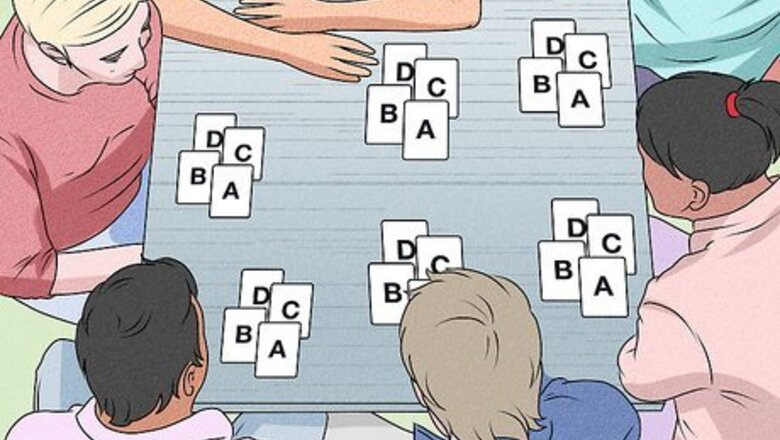
views
X
Research source
Setting Up
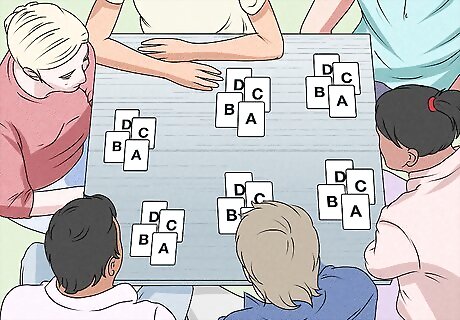
Give each player a set of 4 response cards (A, B, C, and D). You have two sets of cards: answer cards and question cards. Distribute the answer cards so that each player has an A, B, C, and D card. Players will use these cards to vote and answer the trivia on the question cards. The game requires a minimum of 3 people, but you can play with up to 6. If you have more than 6 players, allow folks to form teams so everyone gets in on the fun. You don’t trade or swap answer cards. Players hold on to these for the entirety of the game.
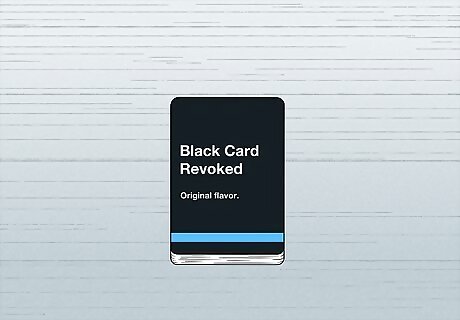
Shuffle the question cards and place them in the middle of the table. Keep the question cards face down for the entirety of the game. Set the deck in an easy-to-reach area so that all players can draw from it when it’s their turn to host the game.
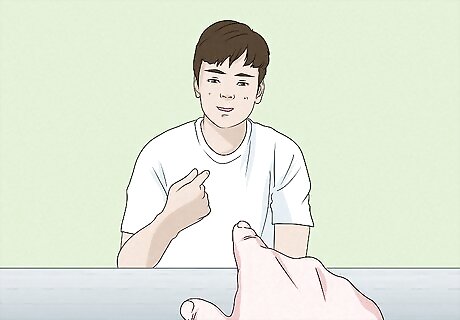
Choose a host for the first round of play. There are no official rules regarding who gets to be the host first, so choose at random or let someone volunteer. Everybody will get to be the host at some point in the game, so if somebody at the table is especially passionate about hosting first, let them do it.
Playing the Game
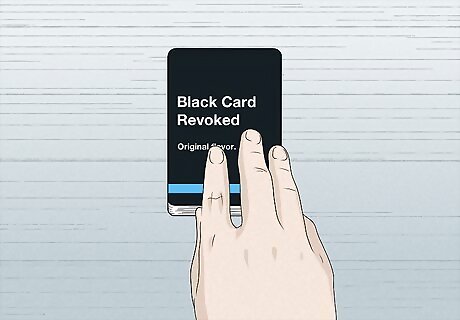
Allow the host to draw a card from the top of the question deck. The starting host draws the question card face-down and does not show it to the players. If you’re the host, take a second to read over the card if you’d like. Unlike games like Cards Against Humanity, players do not come up with their own answers. Each question card is multiple choice (A, B, C, or D).
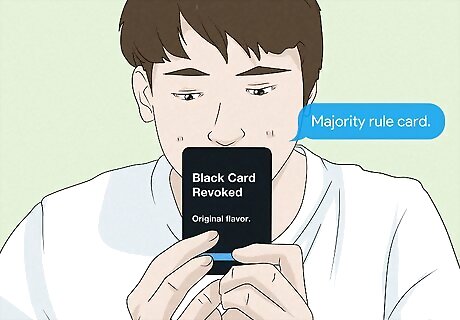
Announce whether the card is “majority rule” or “correct answer.” There are two types of question cards. Correct answer cards only have a single correct answer, which will be highlighted in black. Majority rule cards have no highlighted answer. The host announces “majority rule” or “correct answer” before reading the card aloud. In the bottom right of each card, there is a black label telling you which category the question belongs to (like “life,” “hair,” or “movies”). You can read the category out loud if you want, but it’s not required.
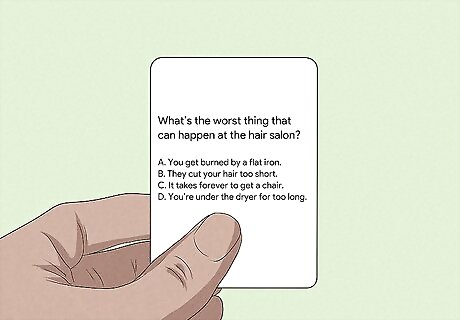
Read the question and the 4 potential answers out loud. The host recites the question out loud for every player to hear, and then lists each potential answer out loud—including the letter for each option. For example, the host might say, “Alright, majority rule card. What’s the worst thing that can happen at the hair salon? A. You get burned by a flat iron. B. They cut your hair too short. C. It takes forever to get a chair. Or, D. You’re under the dryer for too long.”
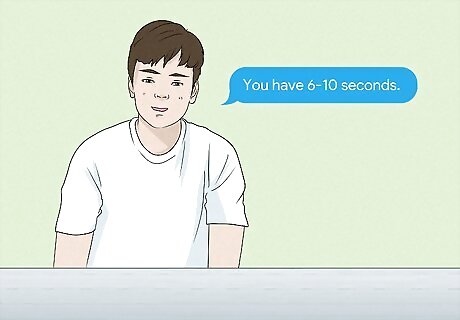
Give players 6-10 seconds to choose their answer. The host determines when it’s time for the players to reveal their answers. The rules state that players should only have 6-10 seconds, but you have some flexibility here if you’re the host. If a question seems especially difficult or there are younger players at the table, feel free to give your players a few extra seconds.
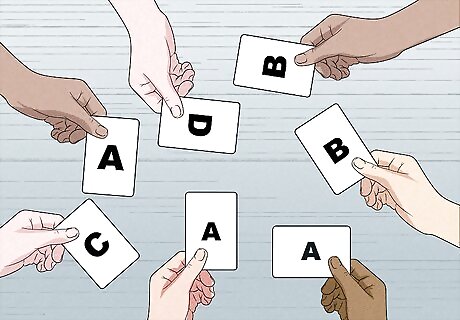
Ask players to reveal their answer cards all at once. Players can either hold their answer card (A, B, C, or D) up for the host to see, or place their answers face-up on the table to submit their answers. If a player doesn’t share an answer, they automatically lose a point. It’s especially important for players to flip their answers over at the same time on majority rule questions, since a player who waits to see everyone else’s answer can cheat and change their card at the last minute.
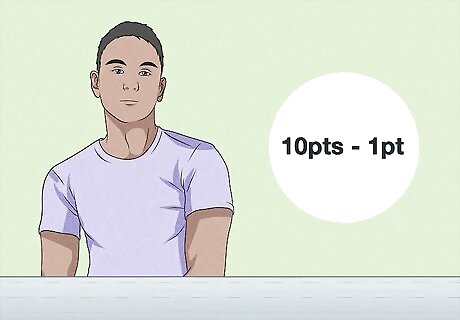
Remove a point from each player with an incorrect answer. Everybody always starts with 10 points, and players can only lose points in Black Card Revoked. If a player gets a correct answer question incorrect, they lose 1 point. For majority rule cards, whichever answer gets the most votes is the “correct” answer, and any player who voted for a minority answer loses 1 point. You can allow players to keep track of their own points if everyone is trustworthy (it’s a party game, after all), or have one player keep track of everyone’s points on a piece of paper.
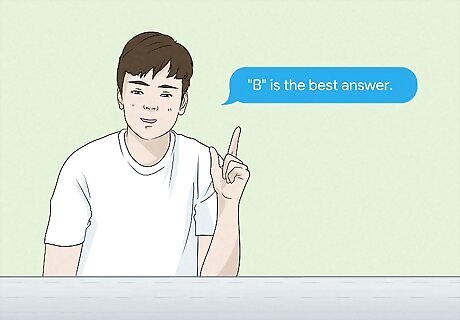
Resolve any ties by relying on the host’s judgment. For majority rule questions, it’s possible for players to tie. When this happens, the host gets to choose what the correct answer is. Remember, majority rules are opinion-based, so don’t worry about getting anything wrong if you’re the host.
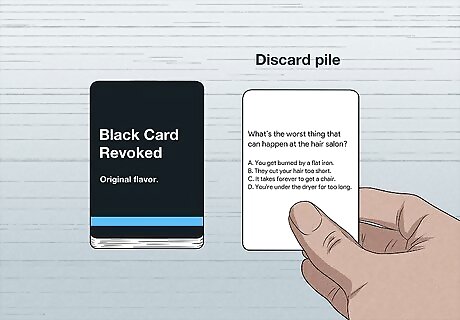
Begin a fresh round with the next host. Once all points have been subtracted for incorrect answers, the host puts the question card at the bottom of the deck or in a discard pile. Then, the next host draws a new question card and a fresh round starts. There’s no official rule on whether the host role moves clockwise or counterclockwise, so it doesn’t matter so long as you pick a direction and stick with it. You get a strategic advantage by being the host since you can’t lose a point if you’re judging the round, so make sure all the players host an equal amount of time!

Continue playing until a player loses all 10 of their points. Play continues until a player runs out of points. The losing player has their black card revoked and the remaining players win. Alternatively, you can choose a winner based on who has the most points left, or continue play until there is one player standing. Remember, this game is meant to be tongue and cheek. Nobody is “less black” just because they lose an opinion-based trivia game!




















Comments
0 comment